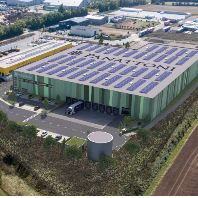A continuation of the pattern from Q2 – a very sluggish occupational market but strong activity continuing in the investment market, fuelled by low interest rates and stock market weakness.
Occupier Take-Up and Demand
Some 140,000 sq.m. taken-up in 2002 Q3 brings the nine-month total to 438,000 sq.m. Take-up during the last 12 months has been approximately half the average of the previous five years and around two-thirds of the 10-year average. In the City, two substantial off-plan pre-lets were committed, but the take-up of completed space remains very low. Active demand has reduced again to 678,000 sq.m. compared to a five-year average of around 1 million sq.m. and 10-year average of 790,000 sq.m.
Supply
The growth in available supply abated in Q3 with the overall Central London vacancy rate increasing only slightly, from 7.2% to 7.5%. Grade A supply is 582,000 sq.m. – 3.2% of total stock. Nevertheless, a combination of development completions, migrations to new pre-committed buildings and downsizing will undoubtedly cause the vacancy rate to rise for at least another year. The scale of the increase will depend upon the speed of recovery in demand.
Speculative development activity totals 675,000 sq.m., the highest since 1990 but still far short of the 1,360,000 sq.m. peak reached in 1988.
Rents
Rents continue to decline as both landlords and tenants with surplus space to unload are forced to compete for the reduced volume of occupier demand. As in the previous downturn, headline rents are, to some extent, being held up by an increase in incentives (particularly rent free periods), an arrangement which normally suits both landlords (by creating value) and tenants (by easing short-term cash flow).
Investment
A further £2.3 billion was transacted in Q3, a quarterly total exceeded only once before, in 2000 Q4. The year-to-date total has reached £5.2 billion, representing an annualised rate only 10% below the record years of 2000 and 2001. Demand remains strong for long-let bond-type investments, although the supply of such product, created by recently completed and let developments, is beginning to dry up. Demand and prices are noticeably weakening, especially in the City, for investments with short to medium-term lease expiries.
For more information please visit www.research.eu.joneslanglasalle.com.
(source: Jones ang LaSalle)






